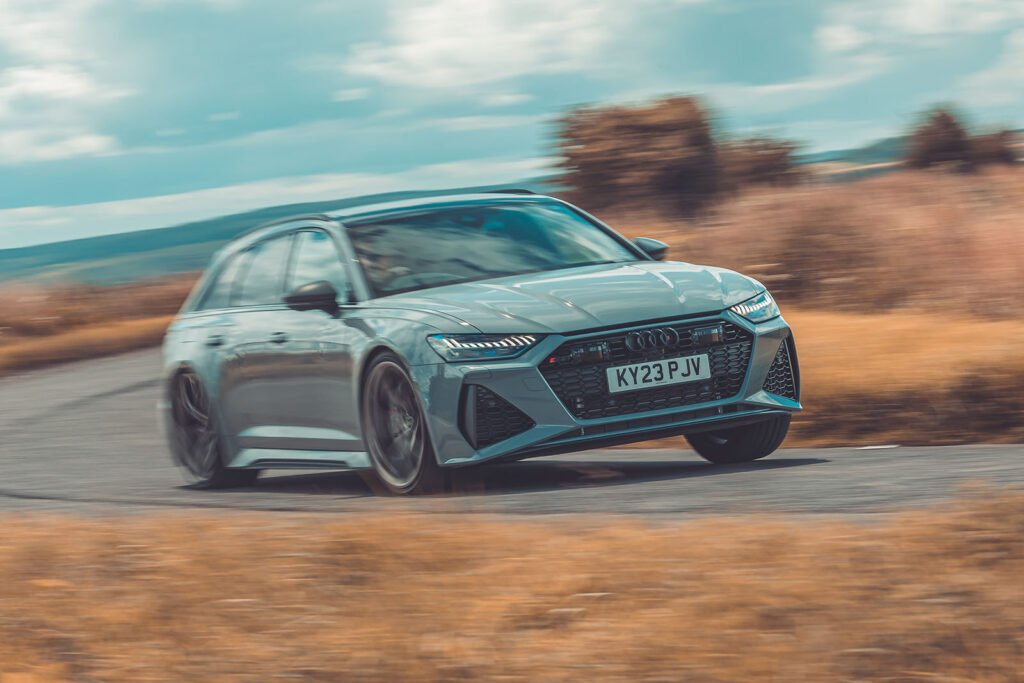It’s a tribute to Audi’s interior designers that the cabin architecture of the brand’s large car fits as well together for a luxurious, high-end appearance in a £50,000 Audi A6 as it does in a £112,000 RS6. This interior is as tech-laden and electronically advanced as you’d expect from an Audi flagship, thanks to the sharp displays and considered combination of cool metal and gloss black surface treatments.
However, the usual tasteful but typically understated sports details help distinguish this performance model from its lower-tier A6 siblings. Contrasting red stitching stands out on the black leather upholstery, and the Alcantara steering wheel and gear lever have an appropriately motorsport feel. There’s also an impressive sense of space in the front half of the cabin, made possible partly by the optional panoramic glass sliding roof, but also by the sheer size of the Audi.
This airiness extends to the second row, where our tape measure registered the typical 720mm of legroom. Although that is 20 mm less than in a BMW M5, the Audi has more headroom (990 mm versus 920 mm). In any case, there’s more than enough room for two adults to sit comfortably and enough overall width for three children to fit in the back seat, without too much complicated tessellation of booster seats.
The luggage compartment has a capacity of 565 liters, with the rear seats folded down to 1680 liters. The aperture itself is usefully wide; the trunk floor is almost flush with the opening, making loading heavy items easy; and for storing cargo you’ll find rails, nets, hooks and a handy bungee strap in the RS6’s trunk, all of which help prevent what you’re carrying from smashing itself to pieces while you enjoy what we’ve come to bring to the next.
Audi RS6 navigation system and infotainment
Audi’s flagship MMI Navigation Plus infotainment system and 12.3-inch Virtual Cockpit are standard across all specification levels of the RS6.
The quality of the graphics and the speed of response to your input are, as we’ve experienced in the past, impressively crisp, but it remains a slightly clunky system to use on the go. The need to apply quite a bit of pressure to get a response is a drawback, but the need to take your eyes off the road for longer than you’d like is the biggest problem.
Still, the Virtual Cockpit is impressively configurable and the ‘RS’ mode will no doubt appeal to some – even if some testers thought it looked a little dull.
A £6300 Bang & Olufsen sound system was also fitted to our test car. It’s certainly pricey, but when set up correctly, it’s one of the best car stereos we’ve come across.
Unfortunately, the same cannot be said for both infotainment screens. One is used for the air conditioning, the other for the radio, and they both use haptic feedback for important functions such as the heated seats.
While the system is nice to look at and largely smooth enough to use, it’s not the best on the market. You have to take your eyes off the road for a second or two longer than would be comfortable when trying to adjust the temperature, and the screen makes you push harder than you’d expect, so you find yourself repeating jabs again and again. again.

